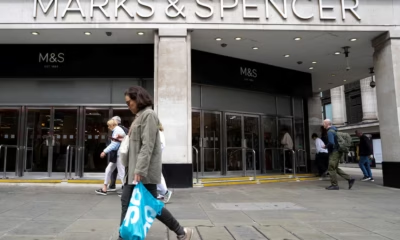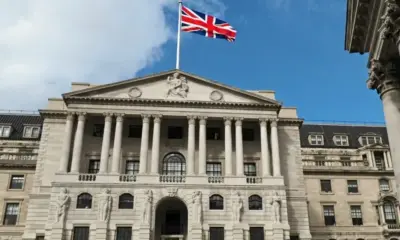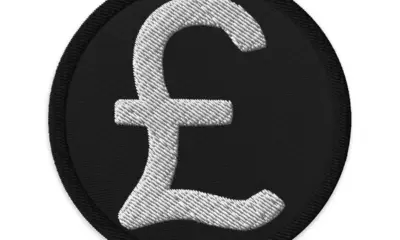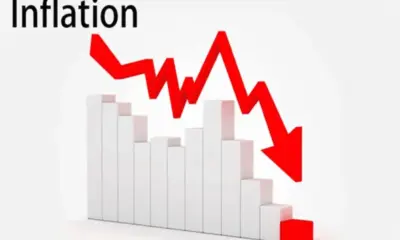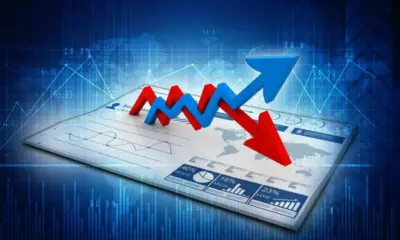Business
Retail Inflation Cools Slightly as Energy Price Pressures Ease
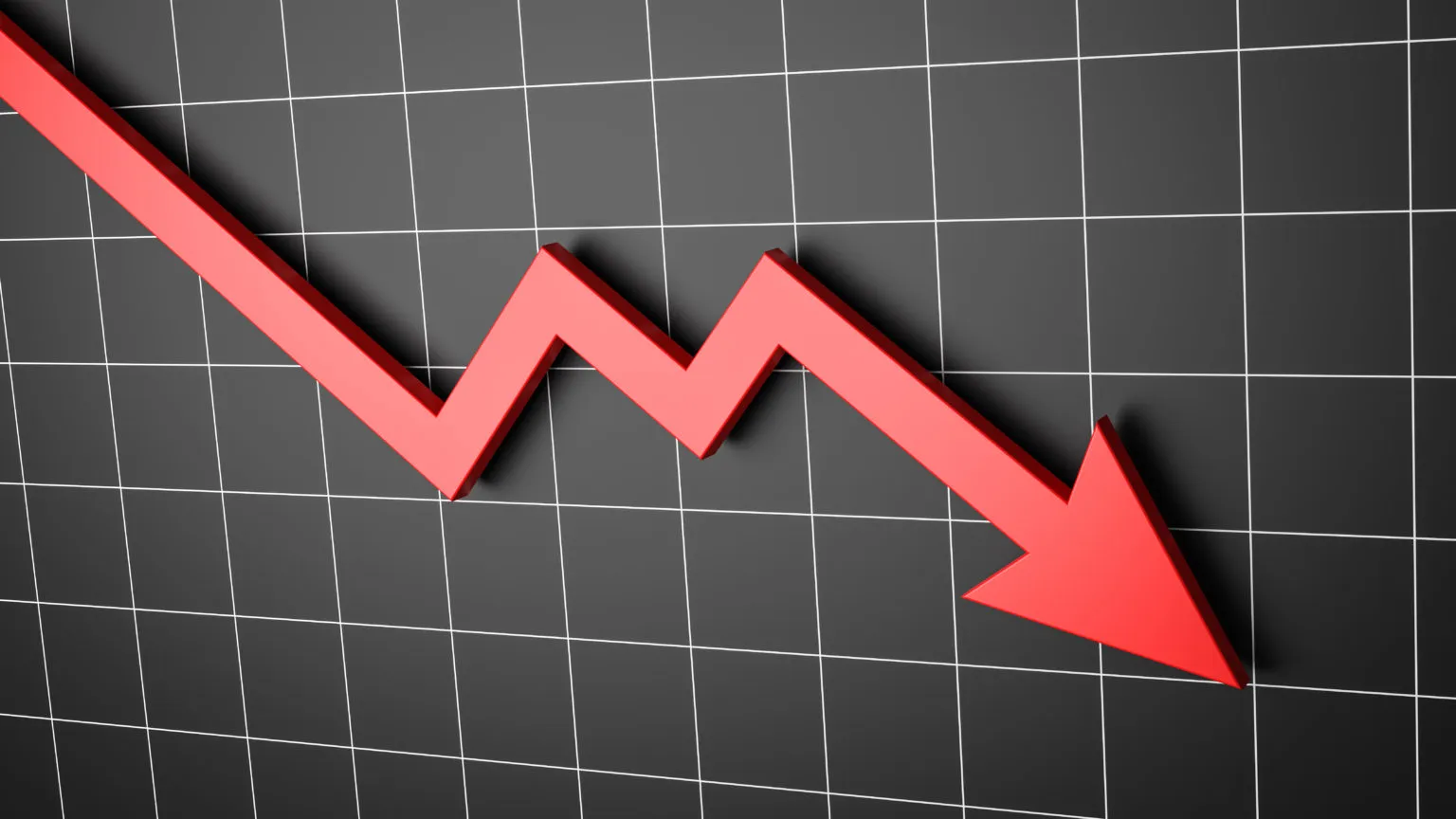
Introduction
Retail inflation in the United Kingdom showed a modest decline in September 2025, offering a small but meaningful sign of relief for households after more than two years of rising prices. According to the latest figures from the Office for National Statistics, consumer price inflation slowed to 3.6 percent, down from 3.9 percent in August. The easing reflects lower energy costs, improving supply chain conditions, and more cautious consumer spending across key retail categories.
While the latest numbers indicate progress toward price stability, inflation remains above the Bank of England’s 2 percent target. Households continue to face elevated costs for food, housing, and transport, and many are still struggling to recover lost purchasing power. Even so, the moderation in energy-driven inflation marks a turning point in the disinflationary process and signals that the most acute phase of the cost-of-living crisis may be easing.
Energy Costs and the Disinflation Effect
The decline in inflation has been largely driven by lower energy prices. Wholesale gas prices have fallen nearly 25 percent since January, aided by full storage levels across Europe and lower overall consumption during a mild summer. The shift toward renewable power generation has also played a significant role, reducing the need for costly fossil fuel imports.
Consumers are beginning to see the benefits. Household energy bills fell by about 5 percent during the third quarter, providing a modest but welcome boost to disposable incomes. The regulator’s latest price cap adjustment further reduced household expenses and helped prevent a repeat of the energy price spikes seen in 2022 and early 2023. Lower energy costs have also supported businesses, particularly in manufacturing, food production, and logistics, where energy accounts for a significant share of total expenses.
However, the stability in energy markets remains fragile. Tensions in key oil-producing regions and fluctuations in global demand could easily disrupt current trends. Analysts warn that while short-term relief is visible, energy remains one of the most unpredictable elements in the inflation equation.
Food Prices and Retail Adjustments
Food price inflation, one of the most stubborn aspects of the broader inflationary cycle, has begun to ease. The annual rate fell to 6.1 percent, down from over 7 percent earlier in the year. This improvement stems from stronger agricultural output, reduced transportation costs, and greater price competition among major supermarket chains. Staples such as milk, bread, and fresh vegetables have shown their first meaningful price declines in months.
Retailers have played an active role in moderating prices. Supermarkets and grocery chains have expanded price-lock programs and renegotiated supplier contracts to maintain competitiveness. Discount grocers have also gained market share, prompting established players to match prices and focus on essential goods. While these adjustments have helped slow inflation, they have squeezed retailer profit margins, creating a more competitive and low-margin environment across the industry.
Global supply chains, which were severely disrupted during the pandemic, have now largely normalized. Shipping costs have stabilized, and improved logistics capacity has reduced delivery times. The pound’s relative stability against major currencies has further eased import-related cost pressures, helping retailers plan and price more predictably.
Consumer Spending Patterns
Although inflation is cooling, household sentiment remains cautious. Many consumers are prioritizing savings and essential purchases rather than discretionary spending. Surveys conducted by the British Retail Consortium show that while spending on food and utilities has held steady, purchases of non-essential goods such as clothing, furniture, and electronics have slowed noticeably.
Higher borrowing costs remain a significant drag on household finances. Mortgage rates have remained elevated, and the average credit card interest rate now exceeds 20 percent, the highest level in more than a decade. This has reduced consumers’ willingness to finance large purchases or take on additional debt. As a result, total retail sales volumes are still roughly 1.5 percent below pre-pandemic levels despite price stabilization.
Economists believe that sustained recovery in consumer confidence will depend on real wage growth outpacing inflation for several consecutive quarters. For now, wage increases are only just keeping pace with price growth, leaving little room for discretionary spending expansion.
Monetary Policy and Economic Outlook
The Bank of England’s monetary policy stance remains central to the inflation outlook. The central bank has maintained its policy rate at 4 percent for the sixth straight month, signaling that it is satisfied with the direction of inflation but not yet ready to declare success. Policymakers have emphasized the need for restrictive conditions until they are confident that inflation expectations have fully stabilized.
The latest data have prompted financial markets to adjust their expectations, with investors now anticipating a gradual rate cut in the middle of 2026. Bond yields have edged slightly lower in response to the softer inflation figures, reflecting improved confidence that inflationary pressures are subsiding. The pound has remained steady, and equity markets have shown moderate gains, led by retail and energy stocks.
Nevertheless, the Bank faces a delicate balancing act. Easing policy too early risks reigniting inflation, while keeping rates high for too long could stall consumer spending and business investment. Analysts believe that policymakers will continue to favor caution until there is clearer evidence that price stability is sustainable.
Industry Impacts and Business Sentiment
Lower inflation is beginning to reshape business sentiment. Retailers and manufacturers are cautiously optimistic that input cost relief will help improve profitability in the coming quarters. Energy-intensive industries such as transport, steel production, and food processing are among the biggest beneficiaries of lower energy costs.
The hospitality and tourism sectors, which were heavily affected by high costs and subdued demand, are also seeing gradual improvement. More predictable energy and food prices are allowing businesses to plan promotions and manage pricing strategies more effectively. However, persistent labor shortages and elevated wage demands continue to limit profit margins.
Construction firms have benefited from slightly lower material costs, though housing market activity remains weak due to high mortgage rates. Developers and estate agents continue to report subdued demand and extended transaction timelines, reflecting broader caution among consumers.
Risks to the Inflation Outlook
Despite encouraging progress, risks to the disinflation trend remain. Energy market volatility, renewed supply chain disruptions, or sharp increases in global commodity prices could push inflation higher again. Domestically, wage pressures in sectors such as healthcare, transport, and education could sustain underlying inflation.
Some economists also warn that the current slowdown in inflation may partly reflect weaker demand rather than structural stability. If consumer and business spending remain depressed, the economy could enter a prolonged period of stagnation even as prices stabilize. Policymakers will therefore need to balance inflation control with measures that support sustainable growth.
Conclusion
The easing of retail inflation provides a welcome but cautious sign that the United Kingdom is slowly regaining price stability. Falling energy costs, improved supply chains, and strategic retailer adjustments have collectively helped cool prices, though the relief for households remains limited.
For consumers, the benefits are modest but tangible, offering a sense that the cost-of-living crisis is finally starting to ease. For policymakers, the challenge is to maintain this momentum without undermining growth. Achieving that balance will be crucial to ensuring that the disinflation process evolves into lasting stability rather than a temporary reprieve.
If current trends continue, 2026 could bring the first real signs of recovery in household confidence and consumer spending, paving the way for a more stable and sustainable phase of economic growth.



